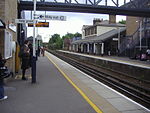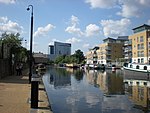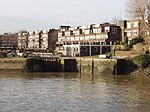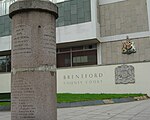Richmond War Memorial, London
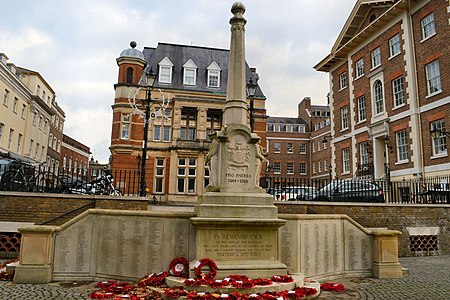
The Richmond War Memorial is located in front of Whittaker Avenue, between the Old Town Hall and the Riverside in Richmond, London. It marks the deaths of local individuals who died fighting in World War I and World War II. The memorial was designed by the local architects Messrs Goodale and Co of Richmond and was unveiled by Field Marshal Sir William Robertson on 23 November 1921. The Mayor of Richmond and the corporation attended the ceremony.The memorial has been Grade II listed on the National Heritage List for England since 2017.It is in the form of a column with an orb on top, standing on a double plinth. On the north side is the statue of a sailor, on the south side the statue of a soldier, and on the east and west sides are the coat of arms of the former Municipal Borough of Richmond, accompanied by this quotation: PRO PATRIA1914–1918 On the west side there is a further inscription: IN REMEMBRANCEOF THE MEN OF THIS BOROUGHWHO GAVE THEIR LIVES IN THE SERVICE OF THEIR KING AND COUNTRYDURING THE GREAT WARS1914–1918 AND 1939–1945 The names of the war dead are engraved into walls that jut out from the memorial. The walls of names were added to the memorial after a newspaper campaign in 1989. The head of the sailor was cut off by vandals in 2003.
Excerpt from the Wikipedia article Richmond War Memorial, London (License: CC BY-SA 3.0, Authors, Images).Richmond War Memorial, London
Boston Manor Road, London
Geographical coordinates (GPS) Address Nearby Places Show on map
Geographical coordinates (GPS)
| Latitude | Longitude |
|---|---|
| N 51.4857 ° | E -0.307 ° |
Address
Brentford School for Girls
Boston Manor Road
TW8 0PG London (London Borough of Hounslow)
England, United Kingdom
Open on Google Maps



